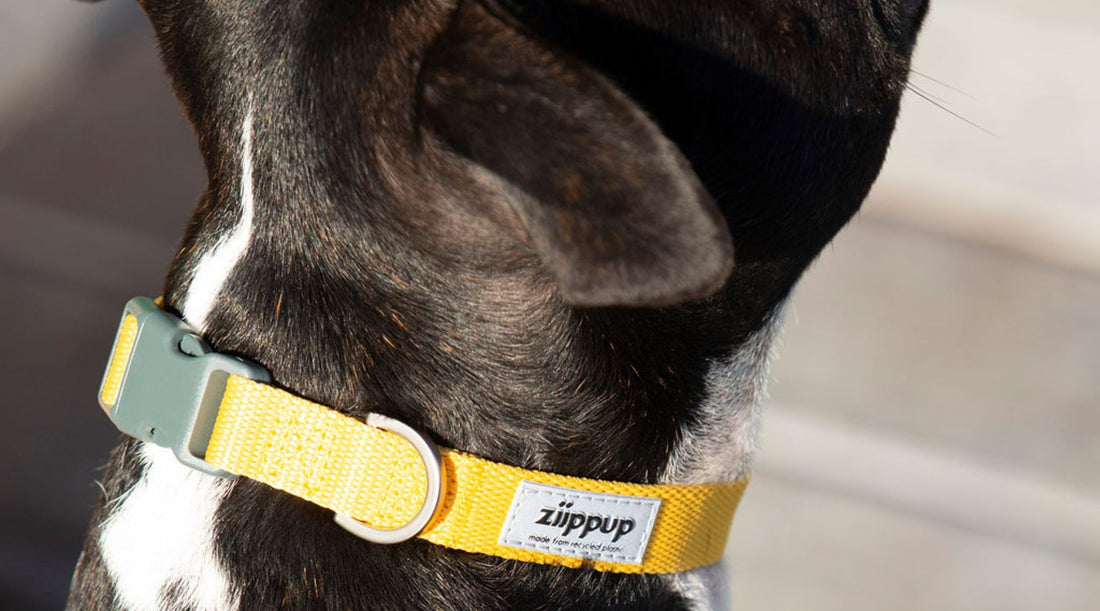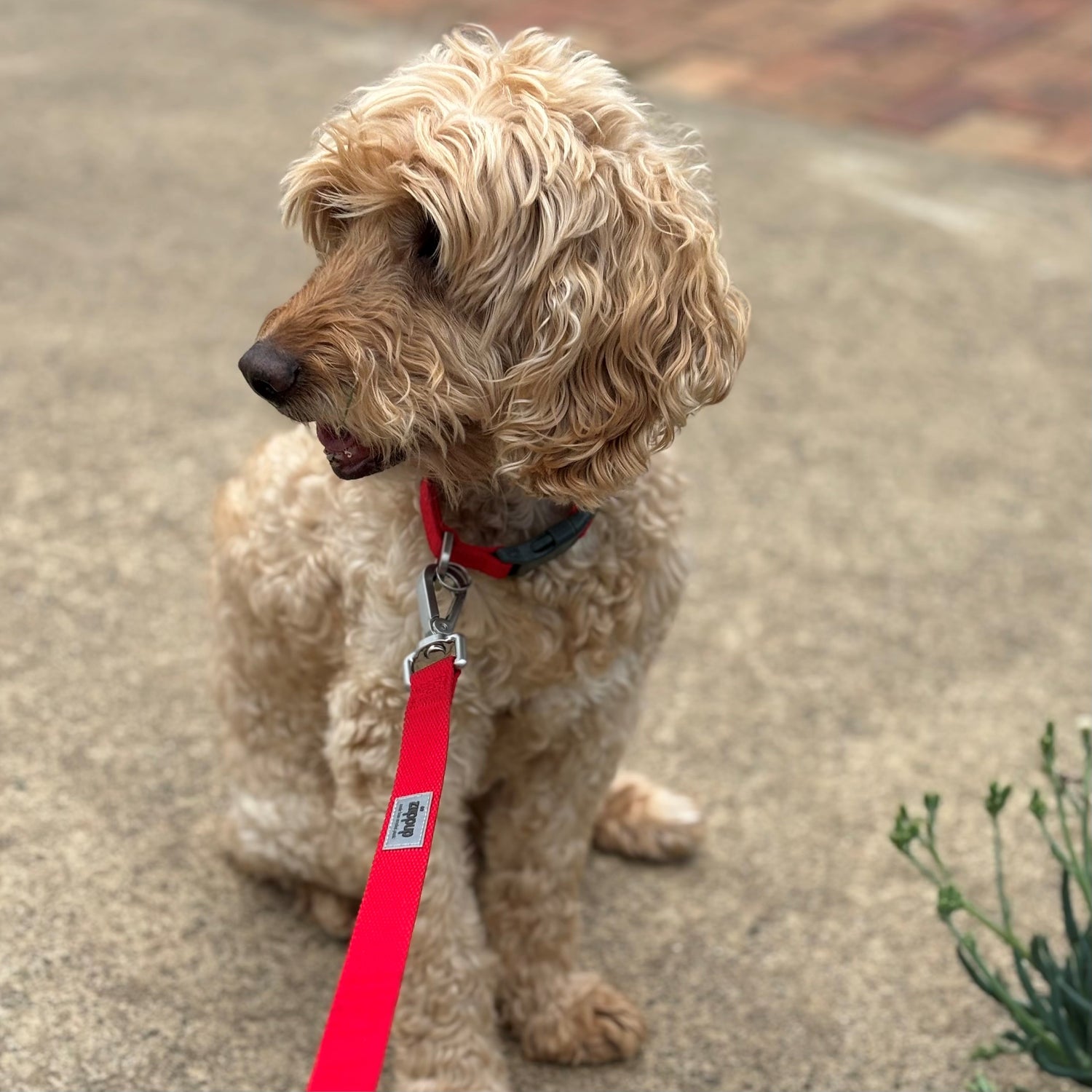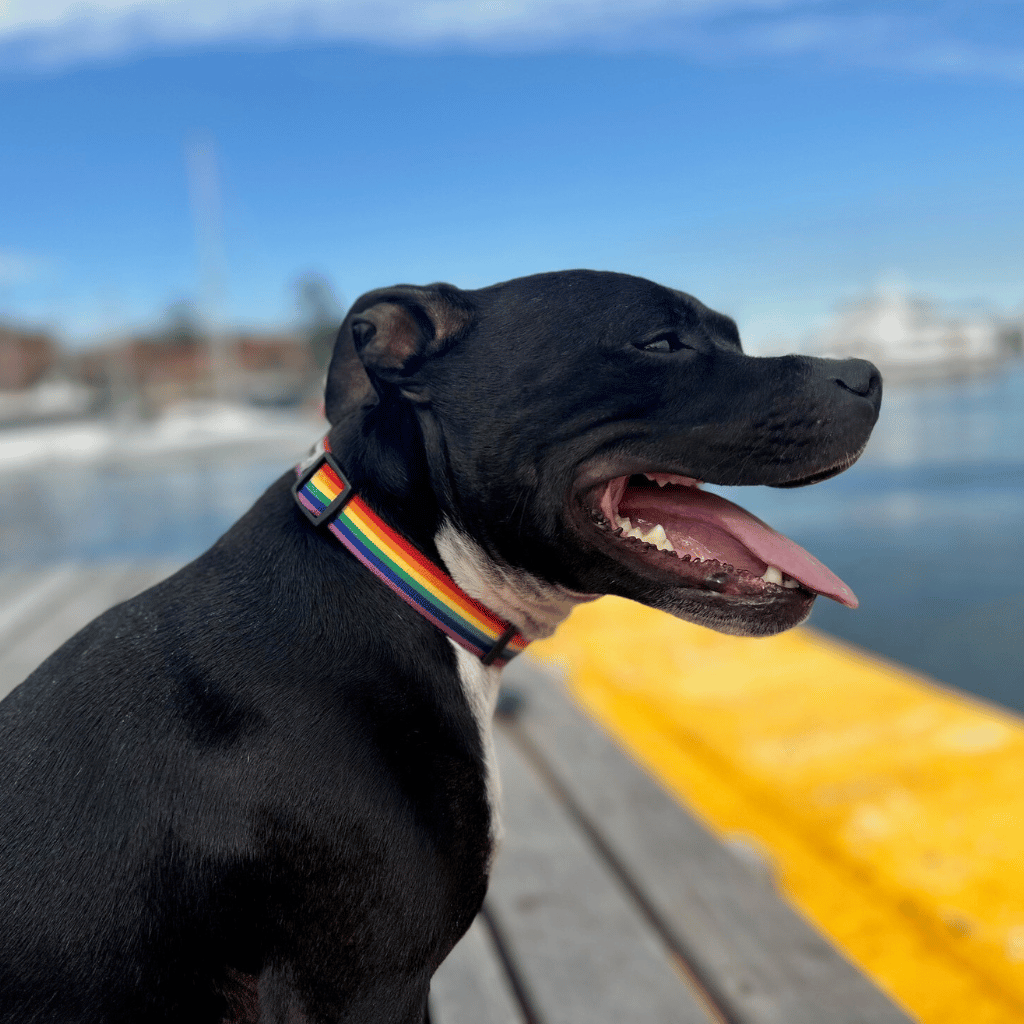
How Often Should You Replace Your Dog’s Collar?
We tend to think of dog collars as something you buy once and, unless they break, we don’t really change them. But the truth is, they can wear out faster than you might realise. From stretched buckles to fraying edges, an old collar can become a bit of an eyesore. But many owners don’t realise that they can pose safety risks too.
So how often should you replace your dog’s collar? The answer depends on your pup’s habits, the type of collar you use, and how often they’re out and about. Let’s break it down so you know what to look for and when it’s time for an upgrade.
Why It’s Important to Replace Dog Collars Regularly
A collar past its prime isn’t just shabby-looking – it could put your dog in danger.
When materials start to weaken, they’re more likely to snap during a walk, especially if you have a strong puller or a larger breed. One break is all it takes for your dog to slip free, and if they’re not highly trained, they could run into traffic or other unsafe situations.
Worn collars can cause other problems too. Trapped dirt and moisture can irritate the skin and lead to infections, while stretched fabric or hardware means the collar won’t sit correctly. A loose collar can slide off mid-walk – or shift in a way that puts uncomfortable pressure on your dog’s throat.
Signs It’s Time for a New Collar
There’s no general rule for how often you should replace your dog’s collar, but there are some common signs to look out for. Here’s how to know if it’s time for your pup’s old dog collar to retire:
- Frayed or torn edges
- Cracks or wear in the buckle
- Faded reflective elements
- A loose or stretched fit
- Smell or staining that won’t wash out
- Redness, irritation, or hair loss around your dog’s neck
How Often Should You Replace a Puppy Collar?
If you’ve got a growing pup, you may need to replace their puppy collar more often than you think. Puppies grow quickly, and a collar that fit last month might be too tight today. We recommend an adjustable, quick-release collar that grows with your pup, giving you long-lasting wear and a great fit.
As a rule of thumb, check and adjust the fit weekly, and make sure to replace it with a bigger size once you can no longer fit two fingers comfortably within the collar.
Things That Influence a Collar's Lifespan
Some collars can wear down quicker than others, depending on a few factors. Here’s what can speed up wear and tear:
- Swimming and weather: Moisture can break down fabric and cause mould or bad smells over time.
- Frequent walks: Using collars every day naturally wears them down, especially for bigger or more active dogs.
- Outdoor adventures: Beach runs, bush walks, and muddy parks can expose collars to rougher conditions.
Time to Replace Your Collar? Here’s What to Look for
If you’re thinking about replacing your collar, why not upgrade to something that makes walks safer while fitting in with your dog's lifestyle?
Reflective dog collars make your dog more visible (and safer) on nighttime walks. If your dog likes to swim, waterproof dog collars are great for staying dry and odour-free (meaning less irritation on their skin). Quick release dog collars are a great option that makes it easy to act fast in emergencies.
At Ziippup, We Make Finding Good Collars Simple
At Ziippup, we design dog collars that are made to last, easy to clean, and built for active pups.
Aside from comfortable, waterproof and reflective dog collars, we also offer matching leads - complete with built-in lightweight zip pockets, so your treats, keys, and poop bags are always right where you need them.
Time for an upgrade? Explore the Ziippup range today and keep your dog ready for every adventure!




1 comment
Great, thoughtful article! I really appreciate how you emphasize the importance of checking a collar’s fit, wear, and material, so often overlooked until it’s too late. At Here You Go Pup, we devote a lot of attention to designing custom dog collars that are not only stylish but built for durability and comfort. It’s amazing how the right fit and quality material can contribute to a dog’s well-being. Thanks for bringing this to light definitely a topic every pet owner should revisit.